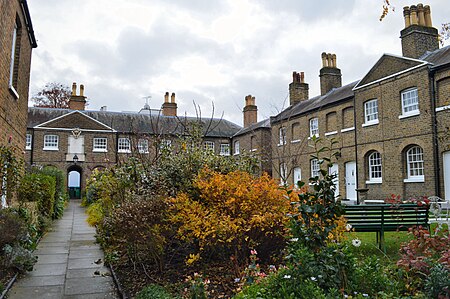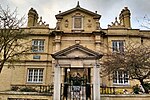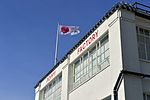Michel's Almshouses
1696 establishments in EnglandAlmshouses in Richmond, LondonGrade II listed almshousesHistory of the London Borough of Richmond upon ThamesResidential buildings completed in 1811 ... and 3 more
Residential buildings completed in 1858The Vineyard, RichmondUse British English from September 2019

Michel's Almshouses are Grade II listed almshouses in Richmond, London, located in The Vineyard, opposite Bishop Duppa's Almshouses and Queen Elizabeth's Almshouses. They were founded in the 1690s by Humphrey Michel. The original ten almshouses were built in 1696 and were rebuilt in 1811. Another six almshouses were added in 1858.The almshouses are now managed by The Richmond Charities. New residents are accepted from 65 years of age.
Excerpt from the Wikipedia article Michel's Almshouses (License: CC BY-SA 3.0, Authors, Images).Michel's Almshouses
Lancaster Park, London St Margarets (London Borough of Richmond upon Thames)
Geographical coordinates (GPS) Address Nearby Places Show on map
Geographical coordinates (GPS)
| Latitude | Longitude |
|---|---|
| N 51.457438888889 ° | E -0.30245555555556 ° |
Address
Lancaster Park 22
TW10 6AB London, St Margarets (London Borough of Richmond upon Thames)
England, United Kingdom
Open on Google Maps









